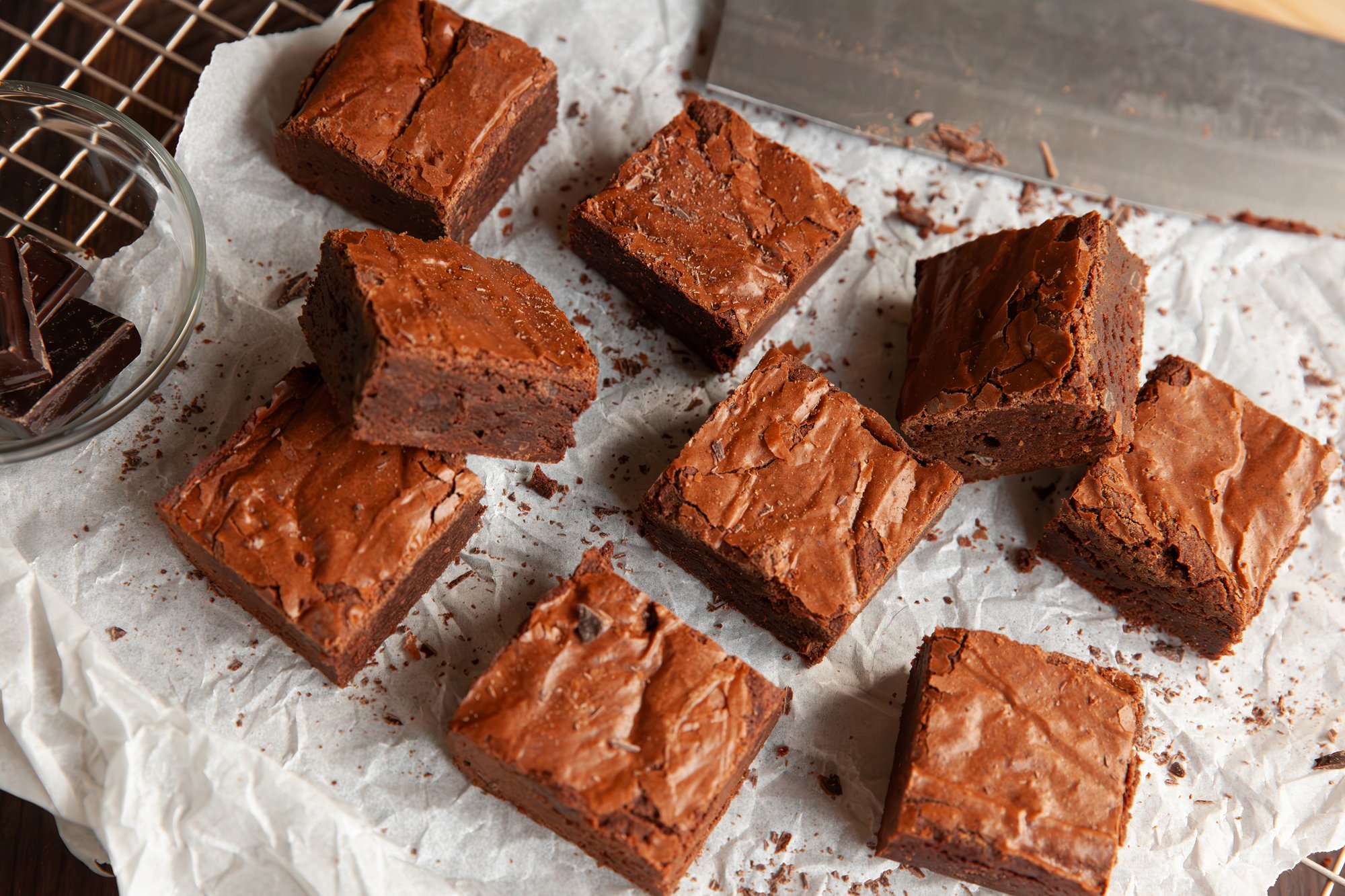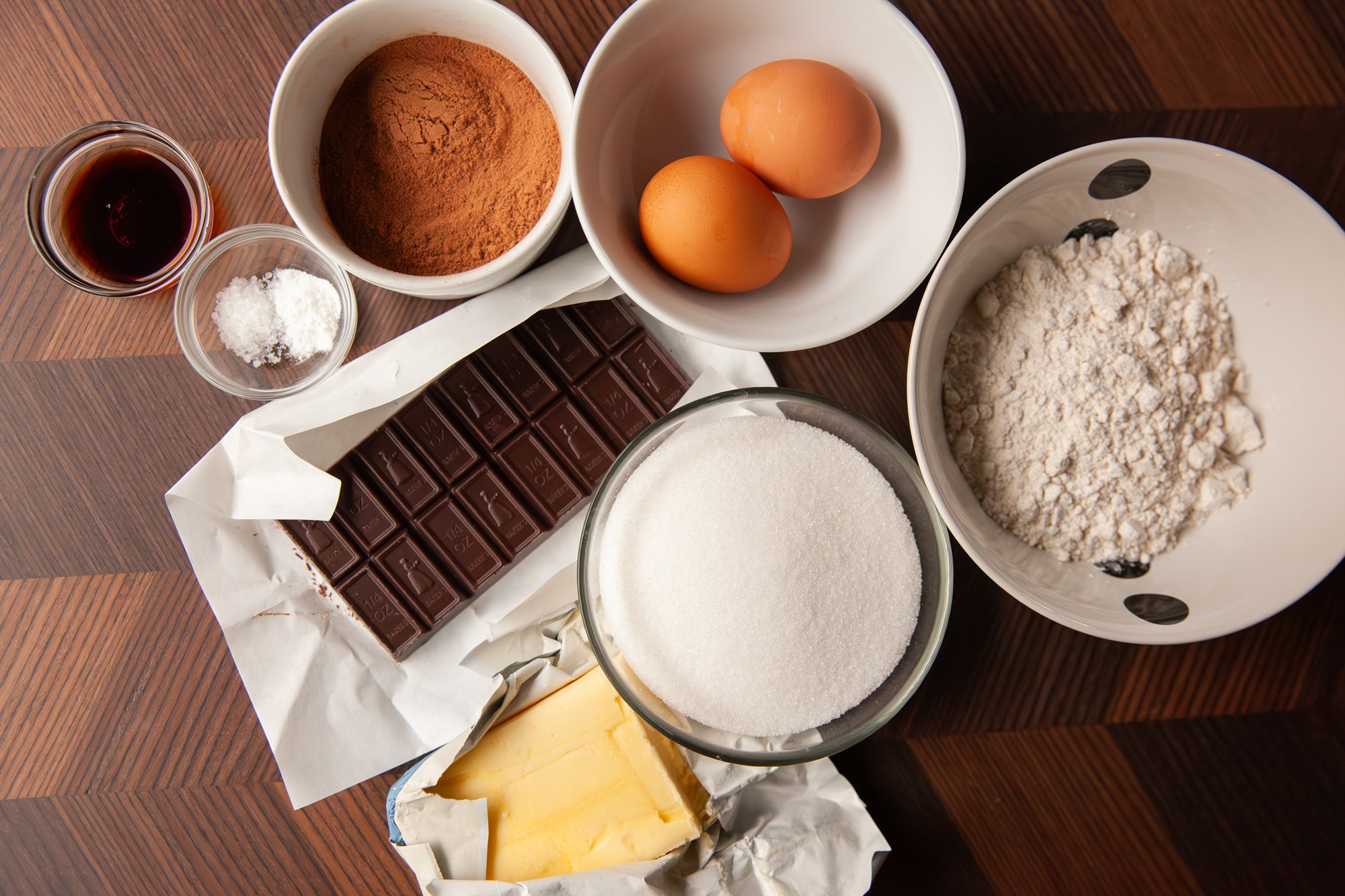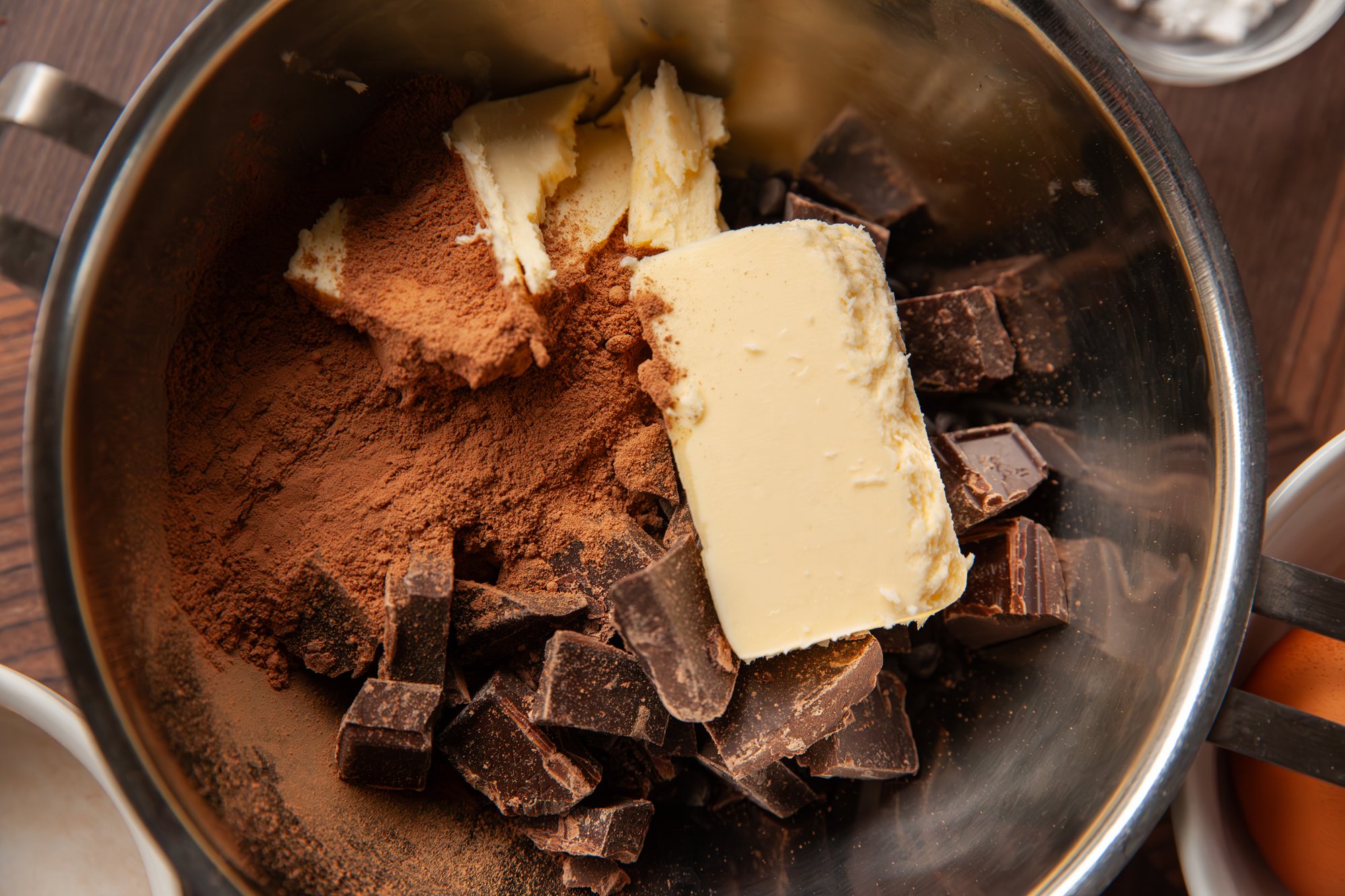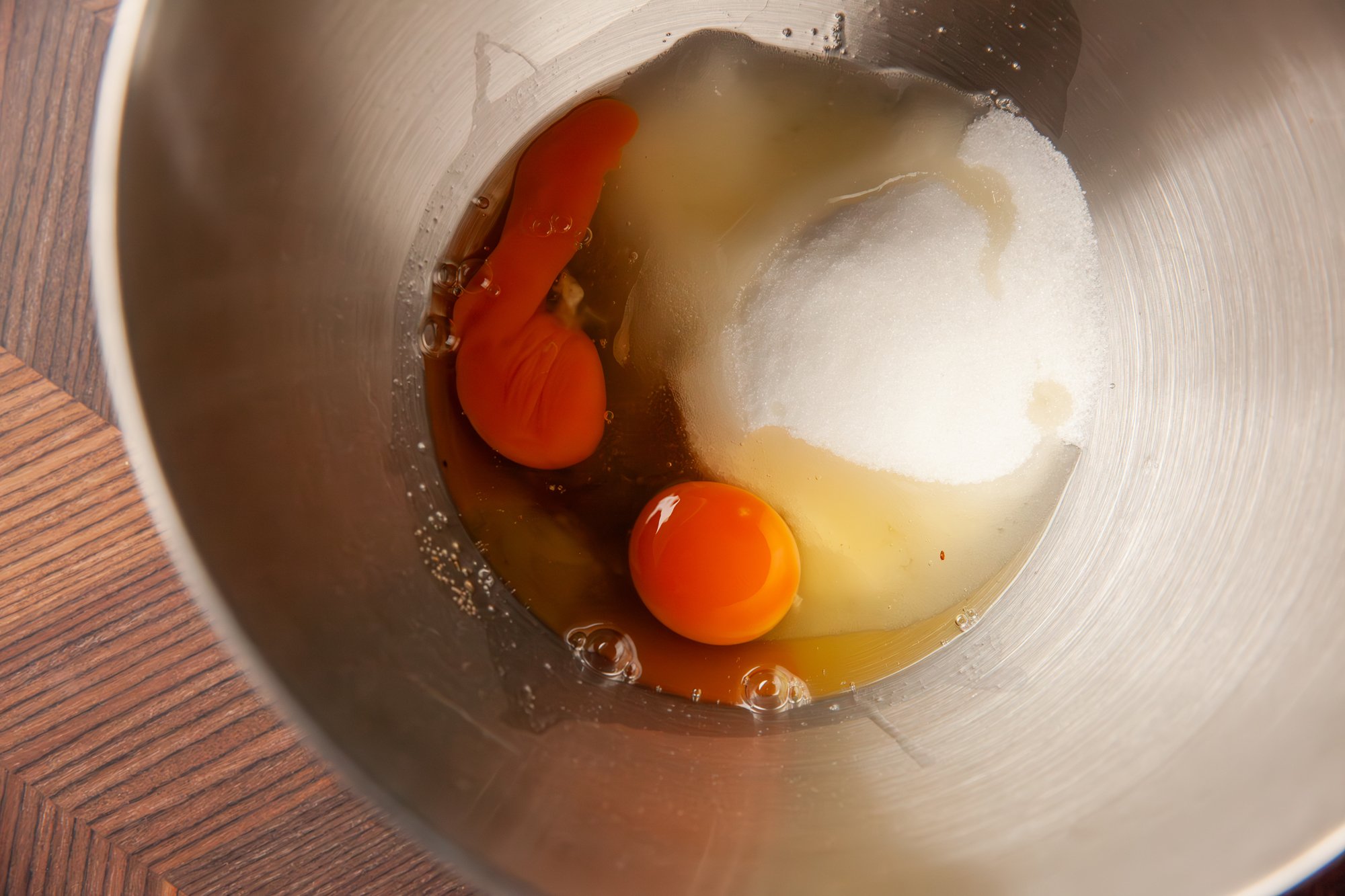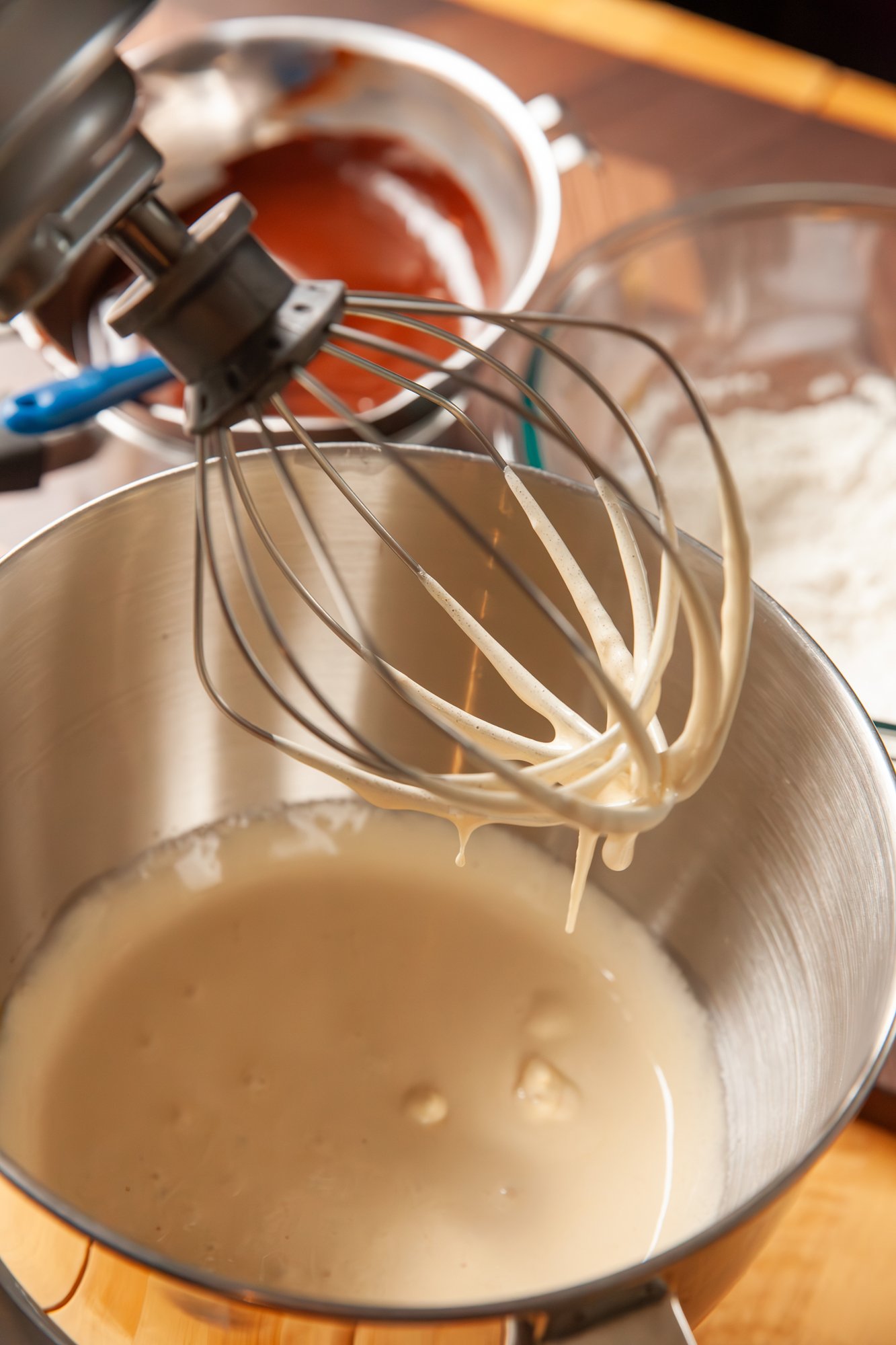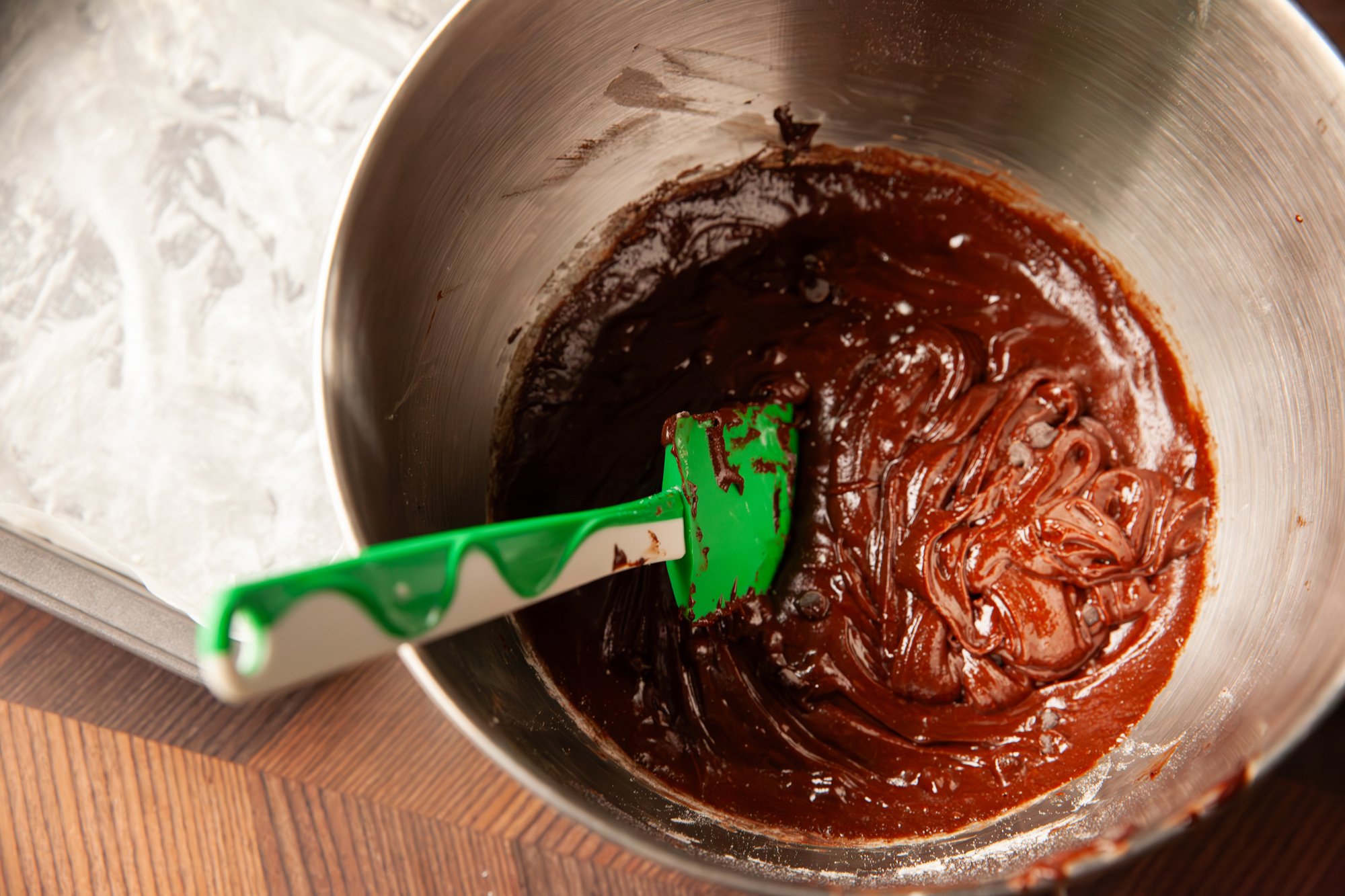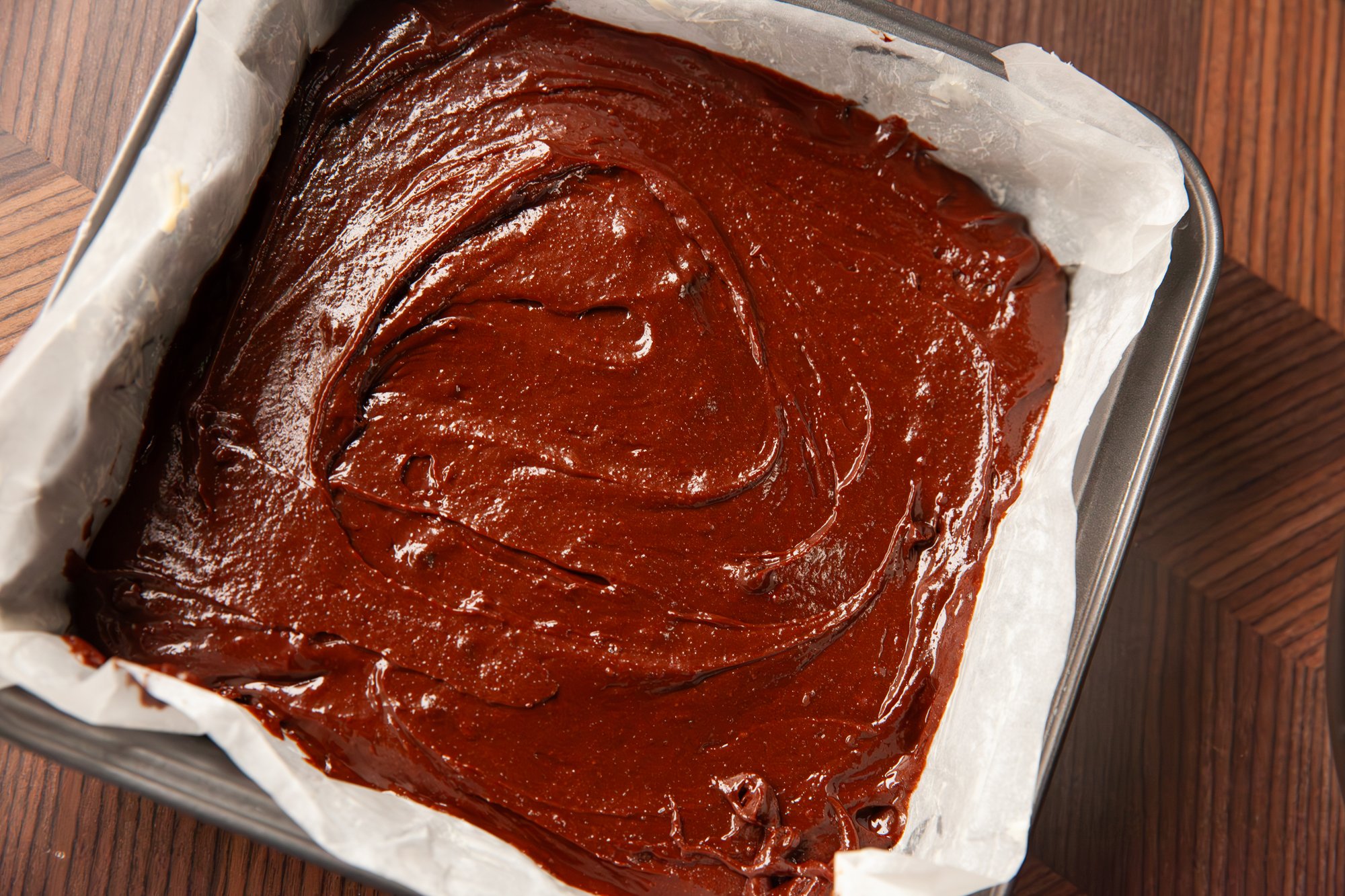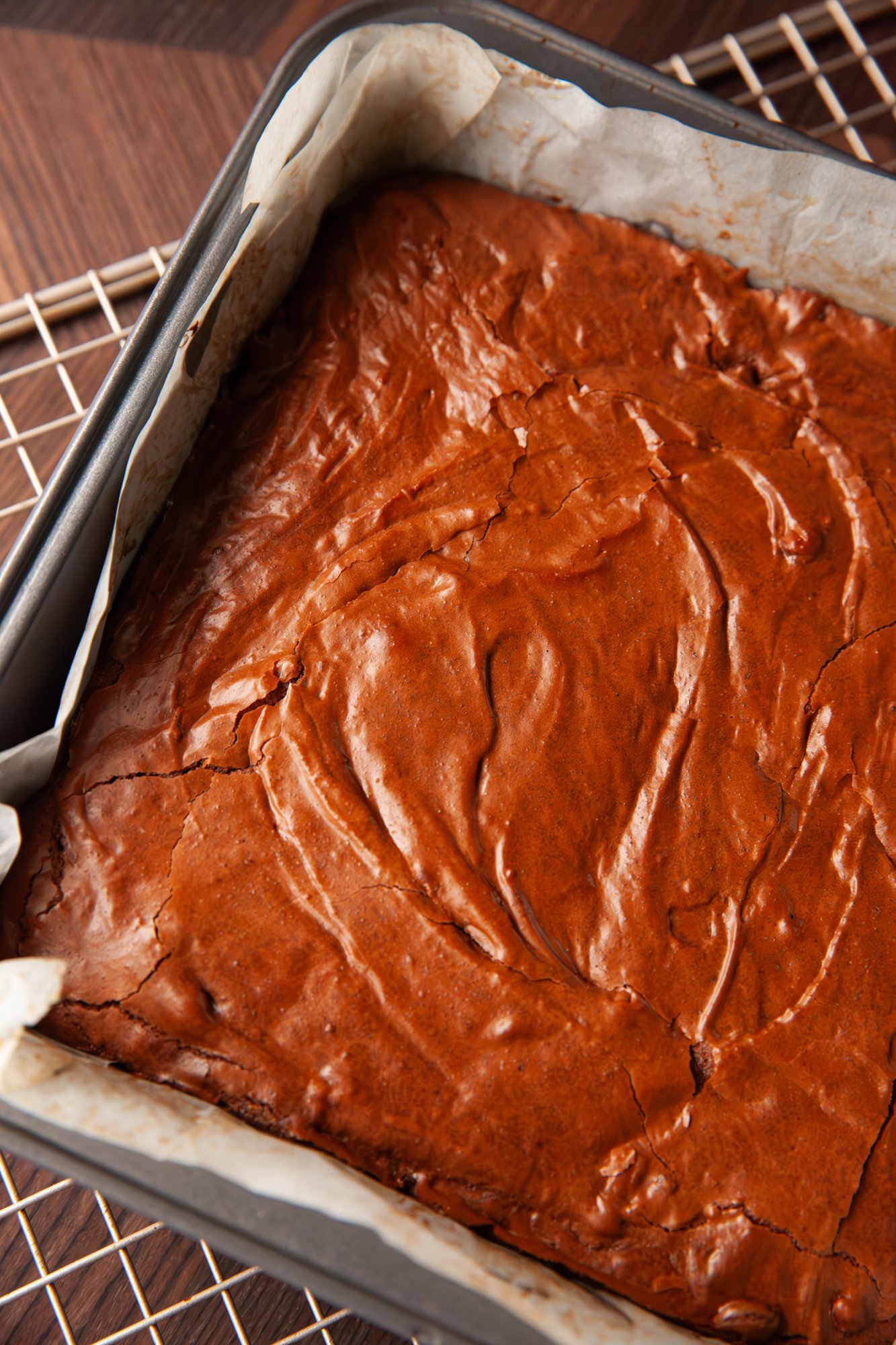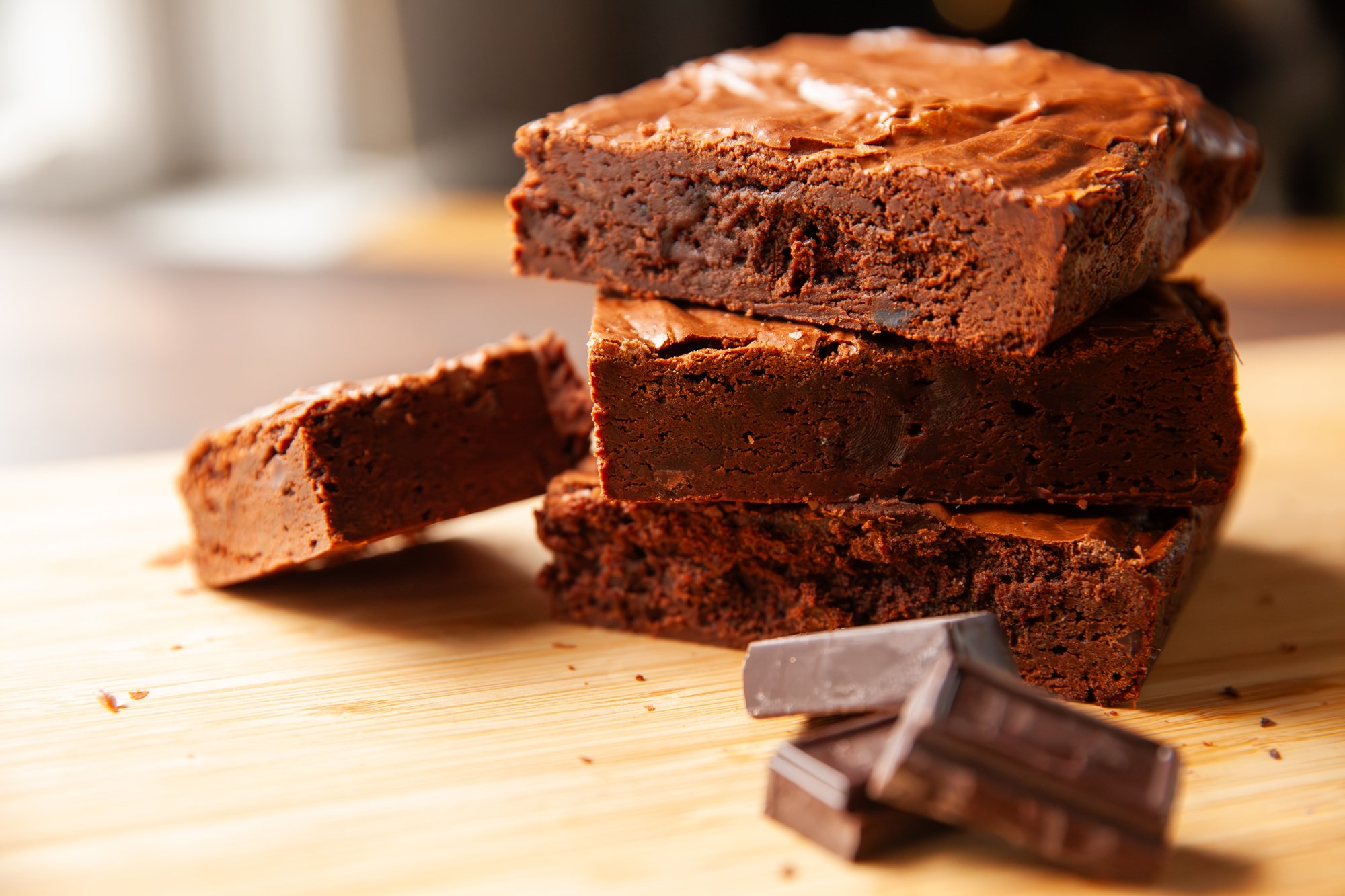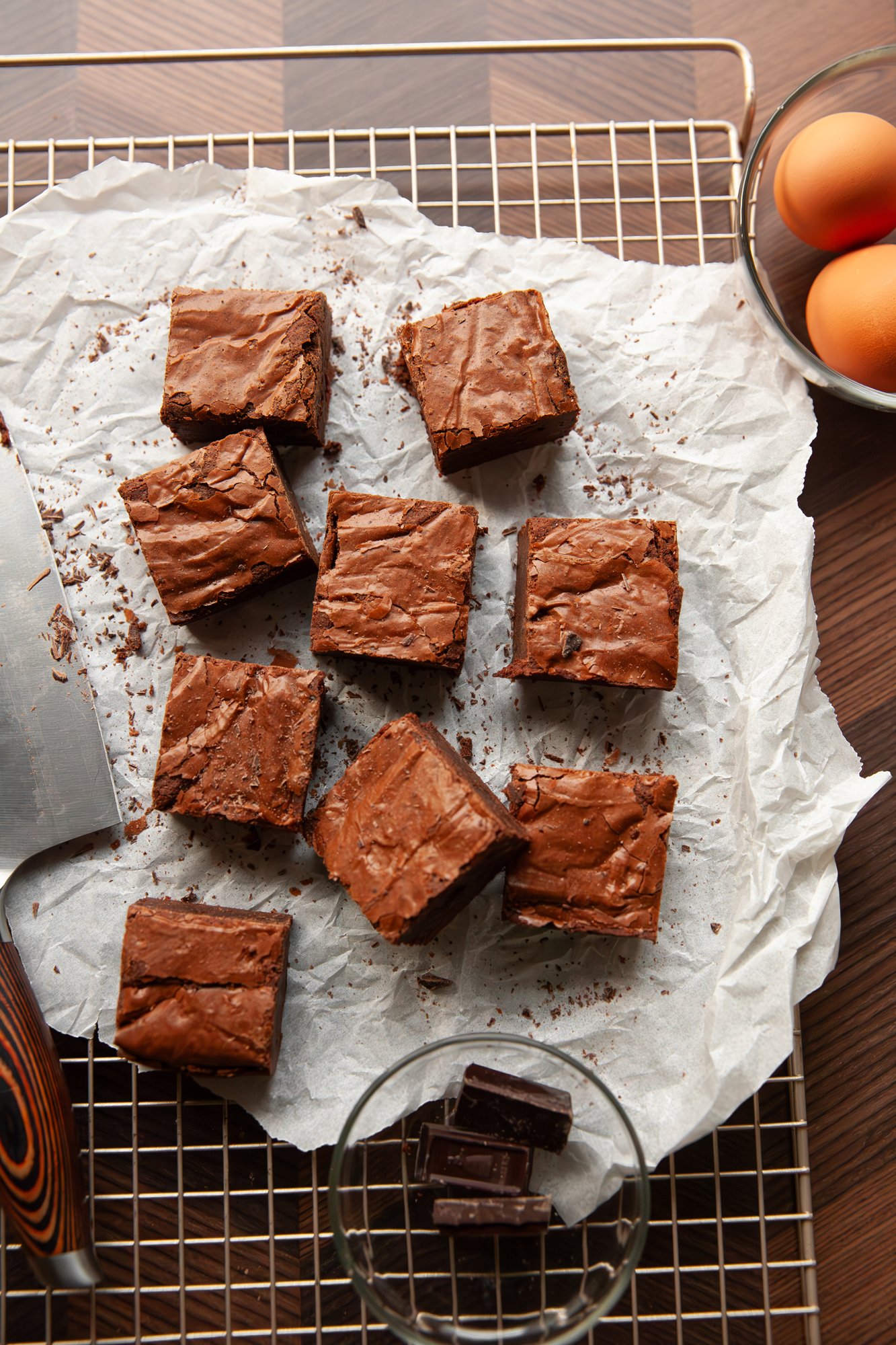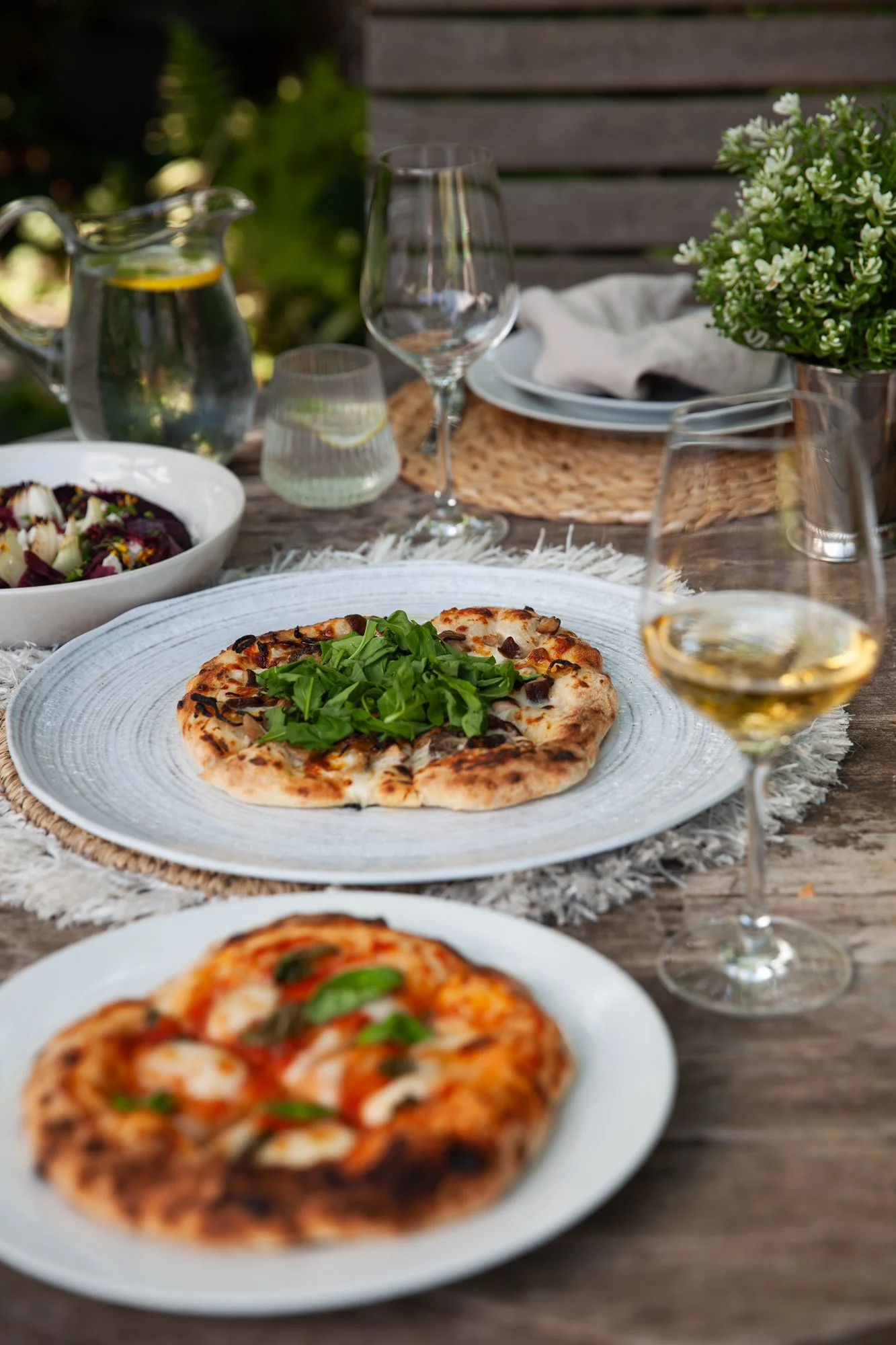Brownies
for BC Living “From Scratch” Column
January 2025
Sure you could make brownies from a box off the shelf at the grocery store, but I bet you have almost all these ingredients in your home right now!
This is a quick and easy recipe that takes minimal effort and will leave your home smelling just amazing.
The brownies keep really well (including freezing), that is, if you don’t eat them all in one sitting.
INGREDIENTS
- 2 large eggs – room temperature
- 6 tbsp (85g) butter (unsalted)
- 170g semi-sweet chocolate
- ¼ cup cocoa powder (unsweetened)
- ¾ cup all-purpose flour
- ¼ tsp kosher salt
- ¼ tsp baking powder
- 2 tsp vanilla extract
- 1 cup granulated sugar
INSTRUCTIONS
Start by preheating the oven to 350°F.
I like to prep all three stations (the pan, the chocolate melting area, the flour mix, and the whisking area) so that when one thing is ready, I’m able to easily move along to the next. So read through the instructions below before diving right in.
In an 8x8 pan, cut parchment paper so it fits up all four sides, line the pan with it, and then grease with butter.
Place a pan with water on the stove and bring to a simmer. Place the butter, chocolate, and cocoa powder in either a double boiler, or a heat-proof bowl and put it over top of the simmering water.
Stir until fully melted together and then set aside to cool ever so slightly.
In a small bowl, combine the flour, salt and baking powder and set aside.
In another bowl add the vanilla, eggs, and sugar together, and then whisk with a mixer (I used my stand mixer, but hand one should also work well) on medium speed for about 3-4 minutes until it is pale in color.
After this, add the melted chocolate mixer and combine.
Reduce the speed to low and then add the flour mixture in small increments until it is also combined (don’t over-mix, but don’t leave any dry spots).
Pour the batter into the greased 8x8 pan and spread around evenly (you’ll likely need a spatula, as it is rather thick).
Bake for 30-35 minutes, then test with a knife and make sure it doesn’t come out wet.
Let it cool in the pan for 15-20 mins and then transfer to a wire cooling rack by lifting by the parchment paper and let cool fully.
You can cut these into however many pieces you’d like, but I did 12 by cutting them into 4 equal parts and then cutting each of those into 4 more brownies.
Store in an airtight container at room temp for a few days (if they last that long), or in the fridge.
You can also easily freeze them by placing them on a tray in the freezer for an hour and then placing them in a freezer proof bag.
ENJOY!


